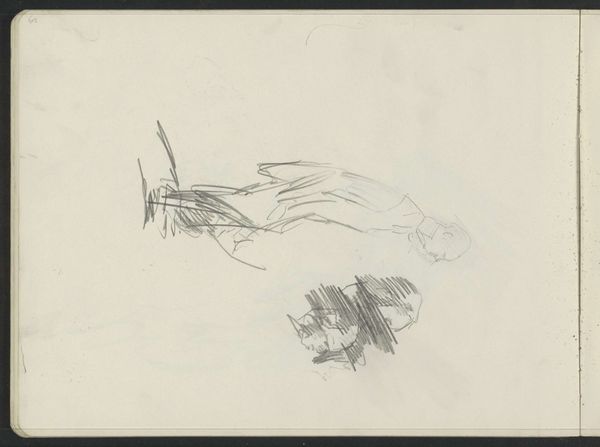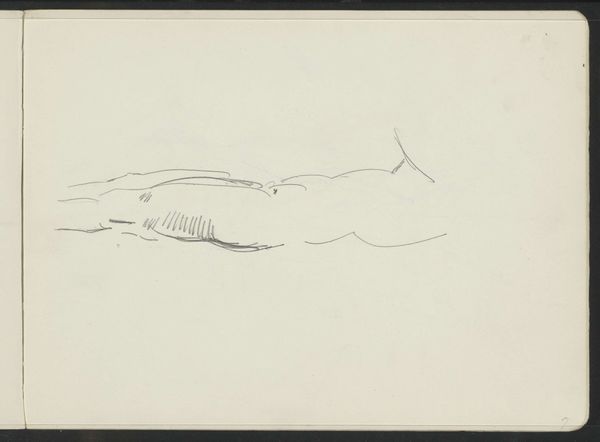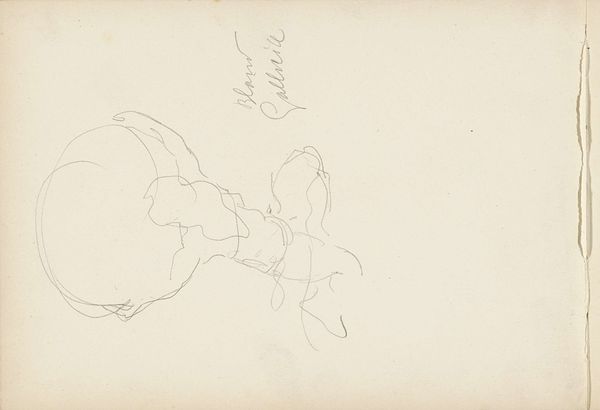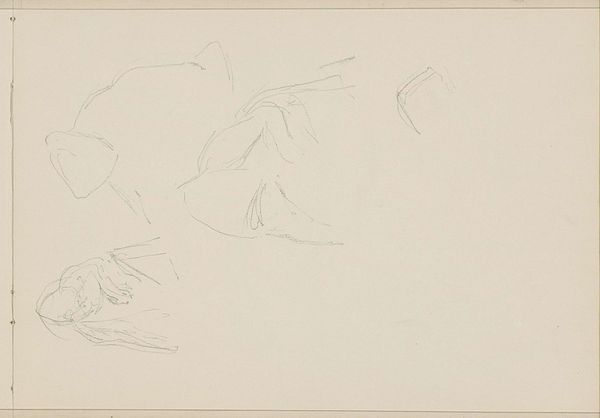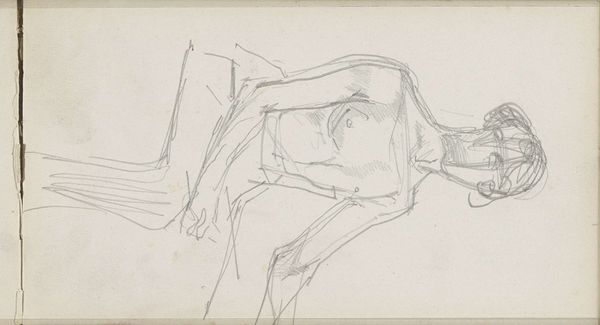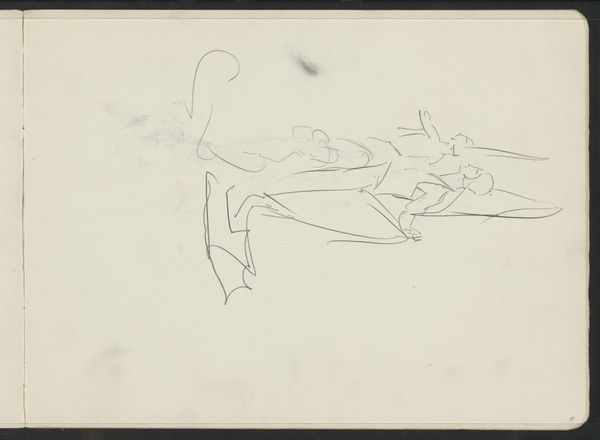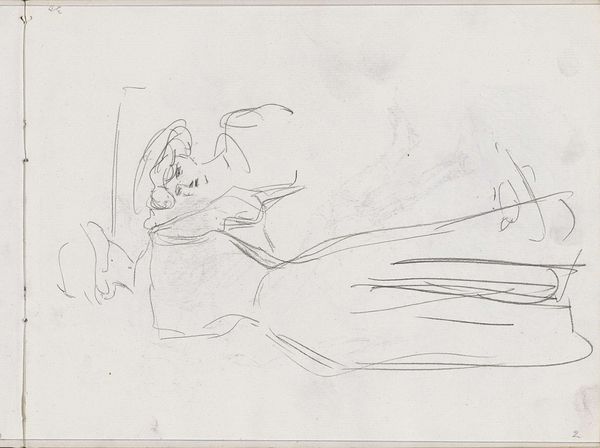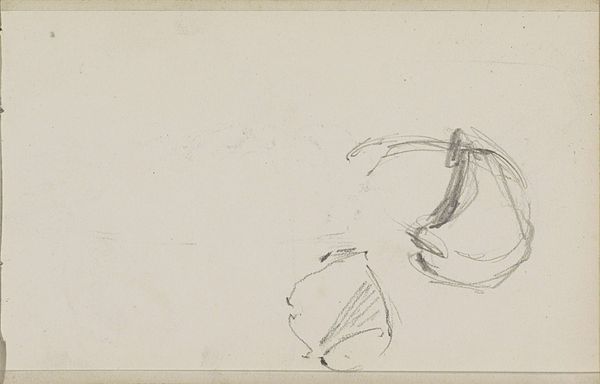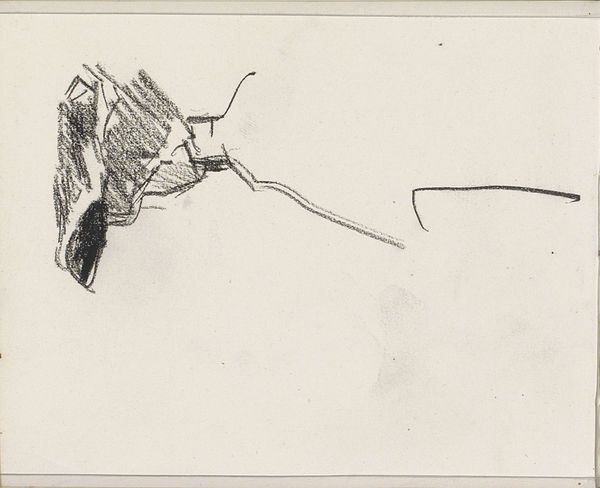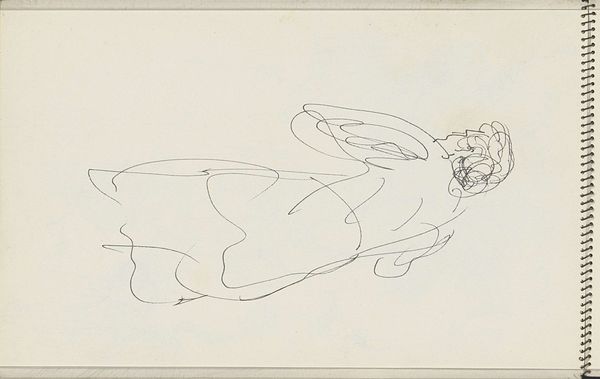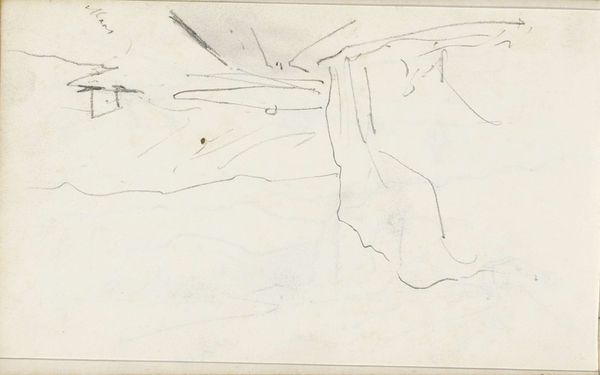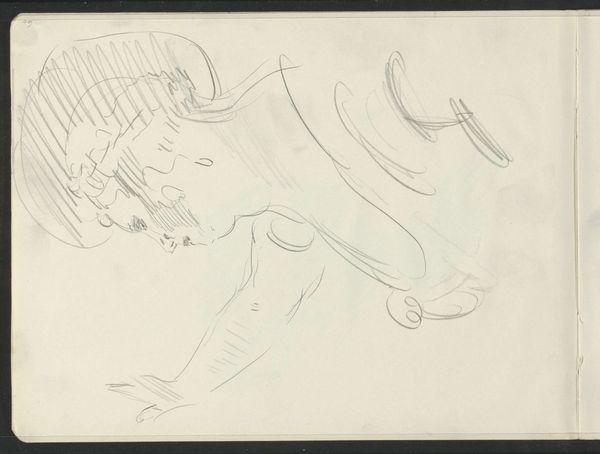
drawing, pencil
#
drawing
#
dutch-golden-age
#
landscape
#
figuration
#
pencil
#
realism
Copyright: Rijks Museum: Open Domain
Curator: What strikes me first is the utter desolation conveyed through such economical means. It's so sparse. Editor: I'd like to present to you, Anton Mauve's, "Ploegende Os" which translated from Dutch means "Plowing Ox", the drawing on view was sketched in pencil sometime between 1848 and 1888. You're quite right in observing its simplicity. Curator: Yes, it's as though Mauve captured a fleeting impression. The lines are so delicate, almost hesitant, yet they perfectly convey the weight and weariness of the ox pulling the plow. Editor: Mauve was deeply involved in the Hague School movement which tried to capture the Dutch landscape, especially through depicting working-class country people as noble rather than dejected. Curator: But there's no romanticizing here, is there? The lack of detail, the muted tones… it feels brutally honest. Editor: The artist has really managed to use the minimal details to hint at what could have been such a vibrant and lush picture. I think its interesting that, like the other realist artists, such as Millet and Courbet, the Ox here may have become a symbol to suggest the common human or working experience. Curator: So it’s possible the drawing represents the impact of urbanization or changing societal structures and how its subjects may experience desolation despite these societal innovations? Editor: Precisely. Art offers an experience for those working-class communities to express and be the subject of these larger societal changes occurring throughout the Netherlands at that time. Curator: Thanks, that lends further meaning to its inherent feeling. Looking at the work anew, I feel a deep resonance. Editor: Thanks for joining me in interpreting this piece!
Comments
No comments
Be the first to comment and join the conversation on the ultimate creative platform.
